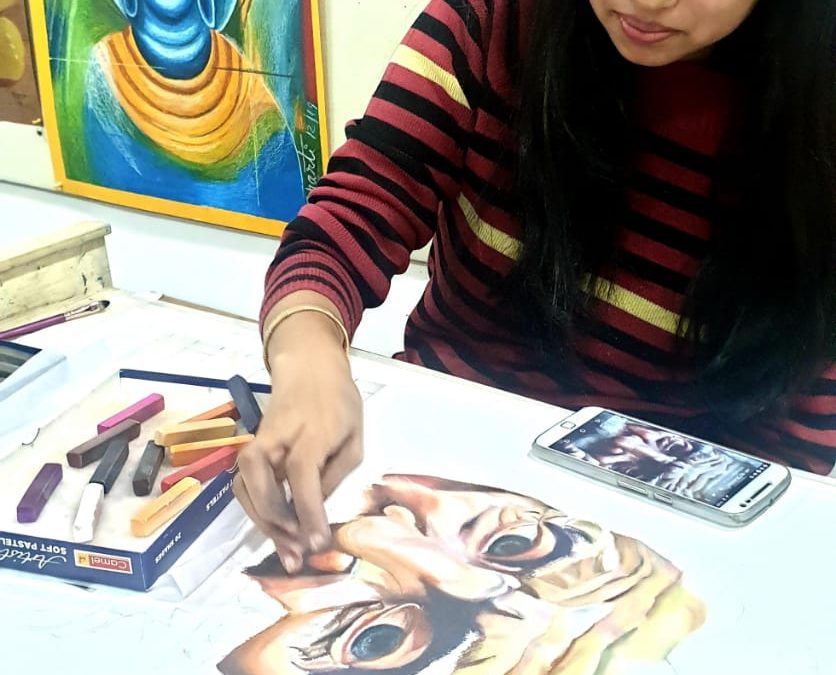A Career in Fine Arts
Fine arts is, at its most basic level, about “art for the sake of art.” Rather of usefulness or practical function, it emphasises aesthetic value and artistic expression. In reality, it serves as a vehicle for bringing ideas and thoughts to life using a variety of materials, mediums, instruments, and techniques. The innate beauty, intellectual characteristics, and imaginative aspects of fine arts products are valued.
Art, in all of its forms, adds colour to the world, raises concerns about the existing quo, and even encourages people to think, feel, or act. A career in the fine arts necessitates originality, curiosity, courage, and zeal; it is a mysterious road that promises to be exciting.
The road to creatively-fulfilling futures
Fine arts can be a gateway to a very creatively fulfilling future for young people who thrive in creative circumstances. To pursue an otherwise unusual field that lies outside of normal academic options requires a leap of faith. Artists carve a niche for themselves because of their passion, willingness to take risks, and readiness to think outside the box.
Creativity and innovation traits translate into an artist’s tendency for enduring in a constantly changing world. In the art world, there have always been and will continue to be changing tides; nonetheless, the same essential attributes that define a creative bent of mind enable artists to embrace these shifts and challenges. With a little inventiveness, one can achieve success in a variety of fine arts jobs.
A diversity of skills & specialisations
Graduates of the fine arts programme develop a wide range of creative abilities. Painting, drawing, sculpture, applied arts, photography, pottery, ceramics, printmaking, calligraphy, digital art, illustration, graphic design, as well as theatre, dance, and music, are all covered in depth in undergraduate courses. Such a base of knowledge opens up an infinite number of specialisation options among them, and even beyond.
Students in the fine arts often acquire exposure to the world they aim to enter during the course of education, as it is a wide topic profoundly rooted in hands-on experiences and practical learning. It becomes easier for them to navigate the direction of their own futures as they meet professionals, work with established artists, engage with studios, and so on. They can put together an exciting mix of events, study, and practise.
Fine arts, as a growing field around the world, offers a diverse range of creative careers. Depending on one’s interests, one can work directly as an artist, painter, sculptor, visual artist, art critic, art director, art curator, art conservator, art collector, museum or gallery professional, or work in related fields such as illustration, graphic design, photography, film-making, videographer, multimedia artist, animator, cartoonist, teacher, researcher, and so on.
The span of creative views is expanding as art continues to collide with other industries such as architecture, design, television, film, fashion, and even manufacturing, among others, generating new paths across the board. Art has made its way out of the galleries and into everyday life. The art world has embraced a bold, revitalised comeback, especially at a period when technology is reshaping the globe. The digital age has opened even more channels for creativity to flow freely, making art more accessible and placing it as an appealing professional option for talented young people. In today’s world, art and artists have more opportunities than ever before.
Creativity, imagination, innovation, intuitive design sense, aesthetic sensibilities, an eye for detail, strong visual, written, or oral communication, excellent observation and analytical skills, socio-cultural exposure, open-mindedness, dynamism, and even marketing skills, event management, and other skills gained through experiences in the study and practise of the fine arts prepare an individual to embark on life’s adventures. So, whether you decide to pursue a career as a practising artist or use a fine arts perspective to improve your creativity in any other field, investing in the fine arts can pay off handsomely.
Emerging options for freelance or independent artists
Many artists want to work independently because of the inherent sense of freedom that comes with creating. This is especially true in the highly dynamic world of art. In order to establish oneself as a full-time professional in core fine arts fields, you’ll need to put in a lot of networking, advertising, and marketing effort. Freelancing, on the other hand, is becoming a more viable alternative for artists who want to take on contract or commissioned work. Artists, who are mainstays of the gig economy, find freelance assignments in the art world and beyond, despite the fact that it is a fast-paced environment. Art galleries and studios, as well as advertising agencies, manufacturing enterprises, digital media, print media, publishing houses, corporates, corporations, textile companies, and fashion houses, are all potential employment for artists.
The power of art
Art comes in a variety of forms, ranging from art for aesthetics to art for a purpose. Artists have been inspired to weave meaning into their work by the very nature of the world we live in. Art has the ability to illuminate life’s realities, convey unsettling truths, and perhaps even imagine a better future. There is undeniable potency in art as a medium to bridge social, political, and cultural barriers, from millennia-old cave paintings that give us insights into a forgotten world to modern art that has filled galleries, streets, and homes around the world with messages of climate change, racism, socio-political ideologies, war, peace, and so much more. It is a universal language that has no time or space limits.

